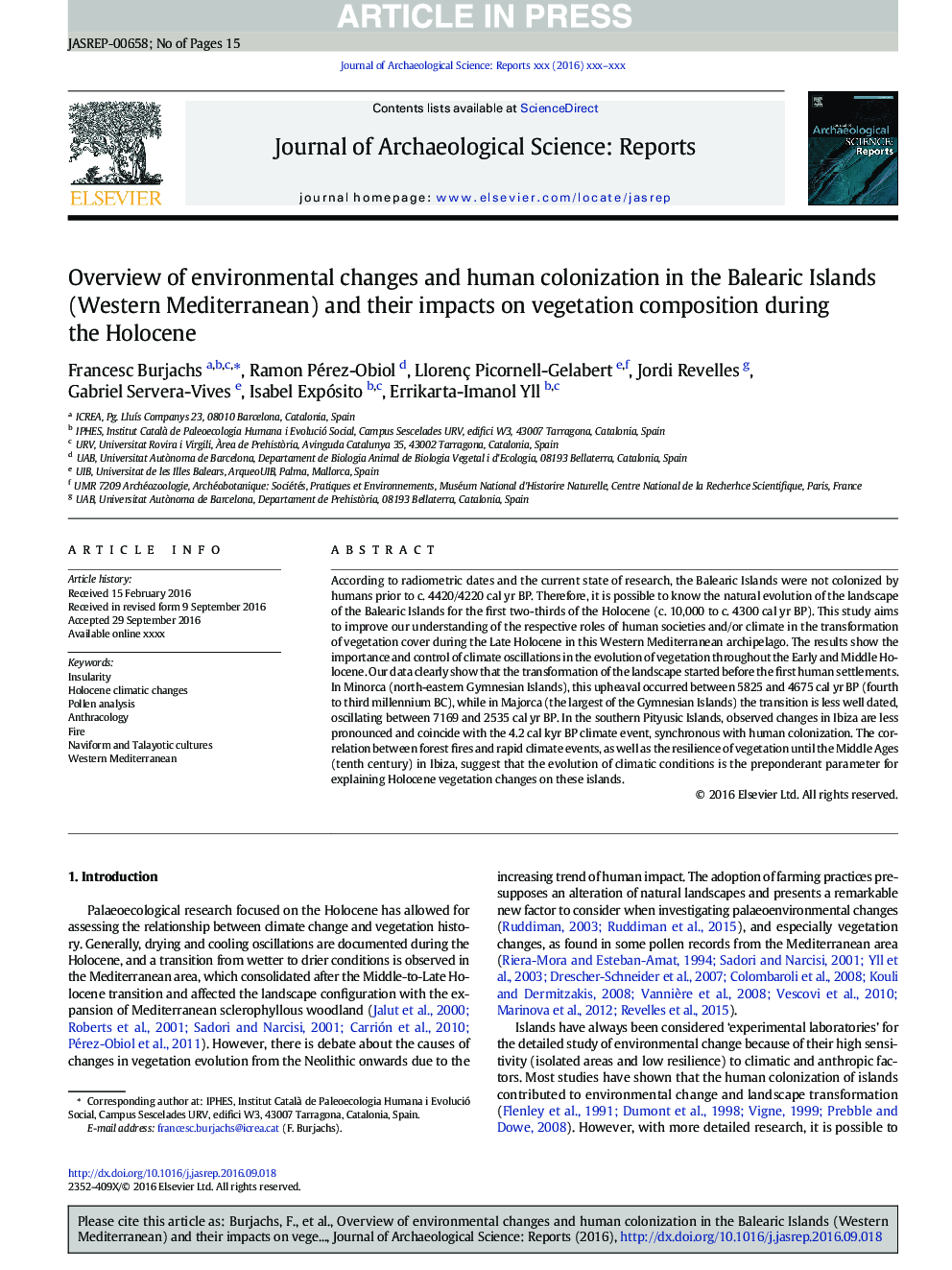| Article ID | Journal | Published Year | Pages | File Type |
|---|---|---|---|---|
| 5112470 | Journal of Archaeological Science: Reports | 2017 | 15 Pages |
Abstract
According to radiometric dates and the current state of research, the Balearic Islands were not colonized by humans prior to c. 4420/4220 cal yr BP. Therefore, it is possible to know the natural evolution of the landscape of the Balearic Islands for the first two-thirds of the Holocene (c. 10,000 to c. 4300 cal yr BP). This study aims to improve our understanding of the respective roles of human societies and/or climate in the transformation of vegetation cover during the Late Holocene in this Western Mediterranean archipelago. The results show the importance and control of climate oscillations in the evolution of vegetation throughout the Early and Middle Holocene. Our data clearly show that the transformation of the landscape started before the first human settlements. In Minorca (north-eastern Gymnesian Islands), this upheaval occurred between 5825 and 4675 cal yr BP (fourth to third millennium BC), while in Majorca (the largest of the Gymnesian Islands) the transition is less well dated, oscillating between 7169 and 2535 cal yr BP. In the southern Pityusic Islands, observed changes in Ibiza are less pronounced and coincide with the 4.2 cal kyr BP climate event, synchronous with human colonization. The correlation between forest fires and rapid climate events, as well as the resilience of vegetation until the Middle Ages (tenth century) in Ibiza, suggest that the evolution of climatic conditions is the preponderant parameter for explaining Holocene vegetation changes on these islands.
Related Topics
Social Sciences and Humanities
Arts and Humanities
History
Authors
Francesc Burjachs, Ramon Pérez-Obiol, Llorenç Picornell-Gelabert, Jordi Revelles, Gabriel Servera-Vives, Isabel Expósito, Errikarta-Imanol Yll,
